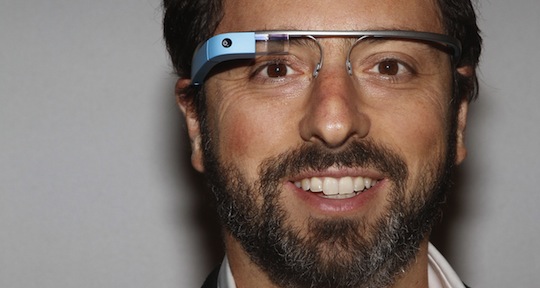28 Apr The Google Glass era has begun. Will it last?
The first public Google Glass povsmartjewelries have shipped. It’s drumming up some real emotion about the social appropriateness of it being pervasive and mainstream. The issue is that it’s not just about the one wearing Glass — for him or her, it’s pure usefulness, once they get past the self-consciousness of their current awkward appearance — it’s about everyone else being always watched, from up close, from the point of view of a person with whom you’re interacting. Are we ready for this? Does it forever cross our comfort line, or will that, like so many other conventions during the Internet, mobile, and social era, slowly push that comfort line further?
We just don’t know; it’s great technology, but perhaps it’s not everyday technology.
Some preliminary early product thoughts:
“I will never live a day of my life from now on without it (or a competitor). It’s that significant… The success of this totally depends on price. Each audience I asked at the end of my presentations “who would buy this?” As the price got down to $200 literally every hand went up… Most of the privacy concerns I had before coming to Germany just didn’t show up.”
GOOGLE GLASS BREAK THE LAWS OF STARTUPS.BE SHOES. NOT KNEESLED.extremestartups.com/fakegrimlock-s…techcrunch.com/2013/04/26/eri… @mikebutcher
— FAKEGRIMLOCK (@FAKEGRIMLOCK) April 26, 2013
Drew Olanoff:
“Some will see this device as a fad, something that isn’t really “necessary” in today’s world, and others will see this as the beginning of an adventure for users, developers and Google, of course. I tend to lean towards the adventure side, as it’s not fully known what impact Glass will have on society, your day-to-day activities, or the future of technology and hardware.”
None other than Google Executive Chairman Eric Schmidt actually said:
Talking out loud to control the Google Glasses via voice recognition is “the weirdest thing… There are obviously places where Google Glasses are inappropriate”
Some of the best behavioural insights come from Jan Chipchase, Executive Creative Director of Global Insights at frog:
His article You Lookin’ at Me? Reflections on Google Glass is a heavier read about the implications of wearing Glass in public. It makes us think more about how Glass may break the unwritten rules that govern socially appropriate behaviour.
It brings up the famous Milgram subway social psychology study from almost 40 years ago: “But Dr. Milgram was interested in exploring the web of unwritten rules that govern behavior underground, including the universally understood and seldom challenged first-come-first-served equity of subway seating.” It was a rare study on the delicate subway order.
“Milgram’s idea exposed the extremely strong emotions that lie beneath the surface,” he said. “You have all these strangers together. That study showed how much the rules are saving us from chaos.”
From Jan Chipchase’s previous research while at Nokia about actors wearing a Glass-like product in Tokyo:
[During experiments about social/tech interactions], our actors and actresses felt extremely self-conscious about wearing nonstandard glasses, and awkward about acting out the scenarios, particularly in contexts where there were others in close proximity. A number of the things we learned from this study surprised us.
What will induce an odd response to usage of Google Glass or other tech device interactions in the future?
Glass has four design principles for developers that focus on the Glass wearer’s user experience: “design for Glass,” “don’t get in the way,” “keep it timely,” and “avoid the unexpected.”
Two complementary principles will go some way toward accommodating the concerns of people in proximity and lower social barriers to adoption:
Proximate Transparency: Allow anyone in proximity to access the same feed that the wearer is recording or seeing and view it through a device of their choosing.
Remote Control: allow identifiable people in proximity to control Glass’s recording functionality and have access to the output of what was recorded.
What a great way to consider how we might accomodate the privacy concerns of people nearby: let Glass usage be transparent and let people collaborate on its created content.
One could argue that the form taken by Glass offers up a lazy futurist’s vision of what might be Glass has a certain inevitability about it.
In due course, the technologies to deliver Glass’s emerging functionality will truly disappear from view — this is a window of opportunity for discussion, debate and a reflection.
Final thoughts:
Yes, we are always being watched, but we’re starting to accept it. There can be value in that, like the surveillance coverage and user generated visuals around the Boston Marathon bombing. That led to a citizen-led detective hunt for the suspects, and you may disagree with how that happened, but isn’t it incredible that we live in that sort of era.
We’re still grappling with our individual privacy in a social-world-gone-online, which is only a fabrication of the last 9-12 years! Remember when we banned cameraphones from locker rooms? The discomfort was recognized, reasonable guidelines went up, and social norms were easily swayed. What happens when Glass of the future will be hidden and covert: people will have it, and there’s nothing anyone else can do, and that’s why we should be worried.
Even now, the product is not fully recognized in the real world, which is why Robert Scoble doesn’t get much backlash about wearing it all the time.
We ought to talk about this openly. Otherwise, could it be “too late”?
In the meantime, I’m bullish on shared experiences on mobile and their inevitable evolution to an always-in-view experience. In terms of people around us, that’s something like my company’s current iPhone app Jiber, and I’d love to hear your thoughts on all this.



